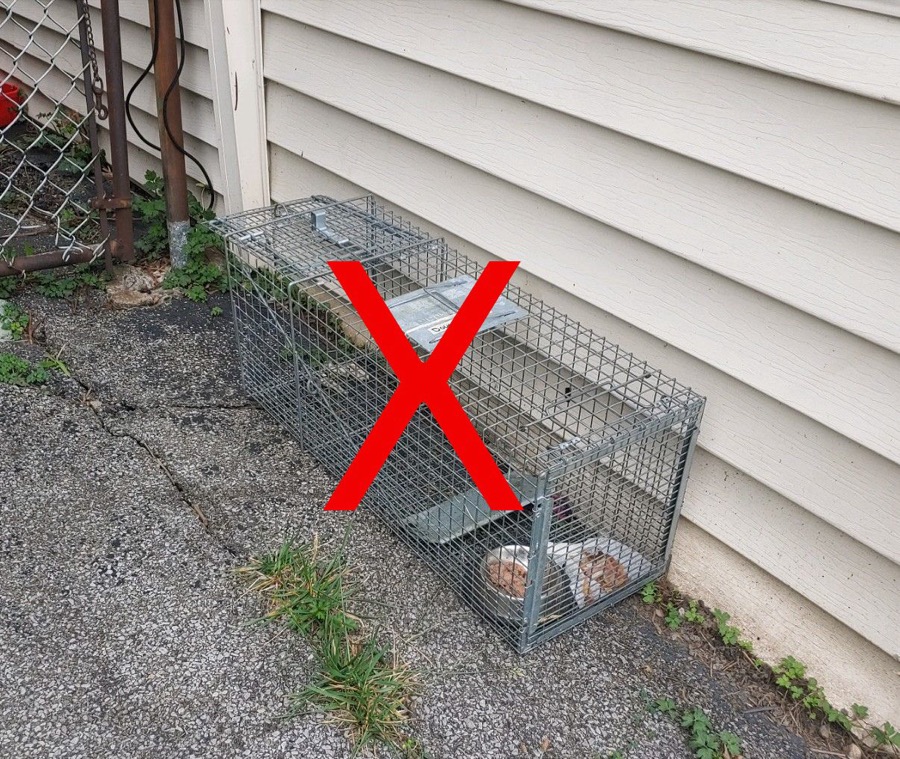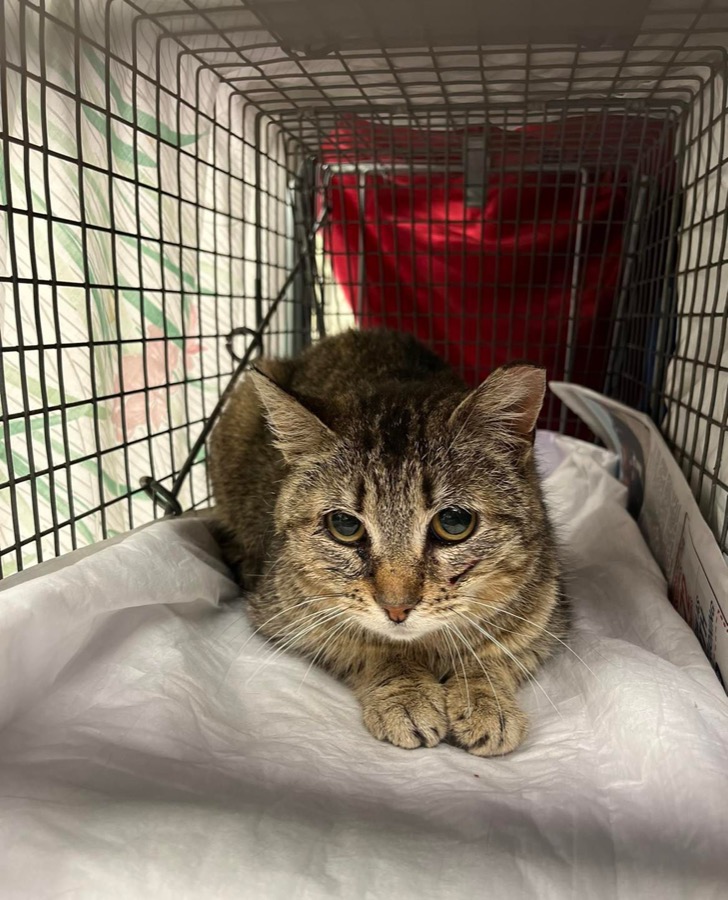Spay/Neuter Pre-Surgery Checklist
MAKE A PLAN AND MAKE YOUR APPOINTMENT
1. Before you trap a cat, plan.
2. Reservations are required for spay/neuter surgery. Call Feral Cat FOCUS or your feral friendly veterinarian to schedule an appointment.
TRAPPING YOUR CATS
1. Obtain a humane trap that is in good working order. Whether you have your own, or are borrowing from Feral Cat FOCUS, be sure to use only humane, non-collapsible traps that are a suitable size for the cat. No squirrel traps.
2. Do not put cans or bowls in traps when trapping cats. Use a small piece of paper plate with a clump of food in the trap.
3. Do not use newspaper inside the traps.
4. Safety first! Follow the trapping instructions provided by Feral Cat FOCUS. Never attempt to handle a feral cat. Don’t stick fingers in the trap or allow children or other pets near the trap.
5. Only one cat per cage. If you end up with two or more cats in one trap, DO NOT separate them. Bring one empty trap with you for each additional cat so that each cat can go home in his/her own individual trap after surgery. If you do not have enough empty traps, still bring the cats into the clinic the day of surgery as Feral Cat FOCUS can provide additional traps for you to use (a deposit is required). If you are using a clinic other than Operation PETS check with them on their policy.
6. Keep traps covered at all times. The cats will be scared and this will help to keep the cat calm after it is caught. Place the trap in a safe place while trapping more cats.
7. Never leave the cat exposed to the elements. The cat now depends on you for safety! Always check the front and back of traps to make sure they are locked and the cat cannot get out. You never want to lose a cat in transport.
HOLDING YOUR CATS
1. Choose a holding area where the cat will be safe in its trap overnight. It should be a warm, dry, well-ventilated, and secure indoor location. The area should be warm in winter, cool in summer. The cats will urinate and defecate while in the trap so place
thick layers of newspaper under traps while the cats are held in the traps. This will make it easy to keep clean.
2. The area should be quiet and away from people so that the cat remains calm. It should be an area that is convenient for you since you’re going to need to periodically check on the cat throughout the night.
3. The area should be well-ventilated. If area is too small, stuffy, or cramped and there is not enough ventilation, your cat is in jeopardy of dying. Likewise, if you have too many blankets on the traps to keep them warm, your cat may not get enough air.
4. DO NOT hold a cat in a vehicle. This is very unsafe, as cars cannot provide enough ventilation AND security at the same time. Also, temperature changes can happen incredibly fast in vehicles.
5. Don’t stack traps on top of each other. This runs the risk of not having enough ventilation for the cat. The cat can thrash around and the trap can fall. Cats could injure each other through the bars of the trap when in close proximity.
6. Keep the cat covered and calm at all times. Place a trap cover, blanket, or an old towel over the trap. This will allow the cat to remain quiet and feel more comfortable. Cats will thrash around in a trap – this is normal. DO NOT RELEASE the cat. It will be fine once you place it in a quiet surrounding and cover the trap.
PRE-SURGERY FEEDING INSTRUCTIONS
1. Use canned food only. This provides enough water/moisture needed while the cat is in the trap. In the evening on the day of surgery, offer the cat food. Mix canned food with water, roll into ball, and drop through the bars into the trap.
2. Do not attempt to open trap to feed cat. Drop food down through the trap. Do not put any bowls or cans in the trap.


3. Follow pre-surgery feeding instructions. If a cat eats too much before surgery, it poses a serious risk because it could vomit while under anesthesia.
Kitten Younger Than 4 Months
Feed (1) tablespoon of wet food at 6 am on day of surgery
Cats Older Than 4 Months
No food after midnight prior to surgery
MONITOR, MONITOR, MONITOR!
1. Don’t place trapped cat(s) in your holding area and forget about them!
2. Check in throughout the night and again in the morning. Peek under the trap cover. Feral cats may growl, spit, hiss or lunge at you when you look at them. Do not fear! You and the cat(s) will be safe if you follow our instructions.
TRANSPORTING YOUR CATS
1. All feral, barn or free-roaming cats must arrive in a secure, humane cat trap. NO EXCEPTIONS! This is for the well-being of the cats and the safety of staff.
2. Check to make sure the trap is locked. Always check the front and back of trap to make sure it is locked and the cat cannot get out. You never want to lose a cat in transport.
3. Never transport cats in an open-bed truck or closed, unventilated car trunk. These are not safe situations for cats. In the trunk of a car, cats will not get enough ventilation. Transporting cats in an open bed truck or Jeep is unsafe and extremely terrifying to cats.
4. Keep the trap and cat covered at all times. Placing a trap cover, blanket, or an old towel over the trap will allow the cat to remain quiet and feel more comfortable.
5. Protect your car’s interior from spraying, urinating or defecating. Line it with plastic, then an old blanket and use newspaper on top of it. Puppy pee pads make great protectors.
SAFETY NOTE – PLASTIC LINERS: When preparing your vehicle to transport cats be careful if using plastic to line the floor, plastic must be covered with material and or newspapers. Make sure the plastic is not wrapped around the trap in any way! Plastic can cause suffocation and/or heat stroke for a cat when wrapped around a trap. Never use plastic between or over traps because of the risk of suffocation and/or heat stroke.
6. Safety of the cat is most important. Stacking of traps is not advisable. It’s best to transport in a single layer of traps (get a friend to help you transport!). IF TRAPS MUST BE STACKED INSIDE A VEHICLE, be sure to secure them with bungee cords or other restraints so they don’t tip over and potentially open and injure or release the cat. And always use a thick layer of newspaper between the traps, to avoid defecation on another cat in a trap.
